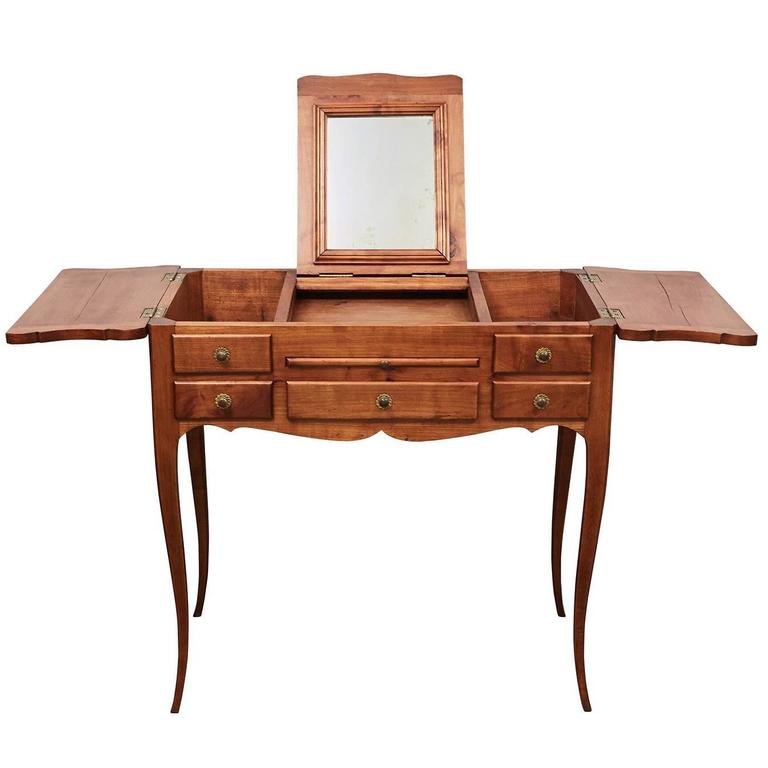talkingfashion » accessories
-
Headpiece Heaven: Five Fabulous Ornamental Accessories
Headpiece Heaven: Five Fabulous Ornamental Accessories
By Paige McKirahan
When it comes to the evaluation of headwear as an accessory rather than something worn out of necessity, it can truly make or break an outfit. Adding a scarf or hat to compliment a piece is customary, but what about more lavish head ornaments that are typically sported by royalty or those strutting the red carpet? Read on to learn about hair and head ornaments that emulate opulence from the top down!
This eclectic headwear is a more decorative alternative to the hat. Its roots can be traced back the Renaissance where it was customary for Christian women in Europe to sport head coverings. The use of the term came into circulation to describe the evolutionary form of this headpiece towards the end of the 20th century. Presently, it is typically worn at events where hats are customary and is accompanied by formal attire. They are commonly worn by woman as a covering during church services, weddings, or horse racing events. They are seen in great volume at royal events and Princess Beatrice of York wore a piece to Prince William and Catherine Middleton’s wedding that was so unusual, it became an internet sensation!
Tiara:
A tiara is a specific type of crown that tends to be bejeweled and ornamental in style. Appropriate for formal occasions of the white tie variety, this headpiece originates in Persia as a status symbol. The use of tiaras in ancient times declined with the rise of Christianity, but they saw a revival in the 18th century when Neoclassicism popularized the accessory for female adornment. Despite the fact that this revival was geared toward royalty, this piece has also been worn by wealthy commoners. The style is popular in the costume jewelry industry where they are worn by women for special occasions including homecomings, proms, quinceaneras, pageants, or weddings.

(image credits to harpersbazaar.com)
Hairpin:
The hairpin can come in many forms, but its basic function remains the same: to hold one’s hair in place. Whether the piece is elaborate and ornamental or utilitarian like a bobby pin, they are essential in creating different hairstyles. Coming from ancient Egypt and China, they were worn by all genders and were essential to hairstyling. They can also be used to note one's social or marital status. Now, they have a more decorative appearance and can be in the form of a barrette, bobby pin, or classic long straight pin.

(image credits to pinterest.com)
This hair accessory can be considered a variation of the hairpin; it is decorative and functional, with its main purpose being to hold a hat to the head. It was invented in Britain in the early 1800s and after its conception, the demand grew so great that a machine was created so it could be mass produced. In the late 1800s, bonnets became widely more circulated than hats, forcing hairpins into the closets of millions. They continued growing in popularity until the early 1900s until women began using them for self-defense purposes. They then began being regulated and their length decreased in order to deter wearers from using them as weapons.
Crown:
As the most traditional of headpieces on this list, the crown is a symbolic headwear typically won by royals. They represent power, victory, honor, glory, and legitimacy, and are often emblematic of the monarchy. These pieces can feature natural motifs, and they often are adorned with an assortment of expensive jewels. There are a variety of crown types and they can be used in coronations, at state occasions, or during weddings. You can even find their style being copied for novelty events (think Burger King's kid crowns!)

(image credit to us.hellomagazine.com)
Has Megan Markel and Harry's wedding got you feeling headpiece crazed? We can sate your desire for this royal glamour from the top down! Take a look at our collection to find headpieces for every occasion!
-
Dazzling Dressing Tables: A Brief History of the Vanity
Dazzling Dressing Tables: A Brief History of the Vanity
By Paige McKirahan
Though the world of luxury furniture is very much alive and well, the type of pieces we see popularized now are worlds away from the specially crafted styles that previously dominated the market. If you are someone with cosmetics, accessories, or perfumes, it is likely that you have some sort of container to hold them all (or so we hope!). But, we ask, have you ever stored them in an ever-so-glamorous vanity?
The dressing table is one piece of furniture that reveals a great deal about the culture in its time; few other items tell us more about leisure pursuits, trends, and changing social customs than this. This is an ever evolving piece and it has held a variety of names including the dressing table, dressing stand, vanity, and toilet table. But, we wonder, where did this fashionable furniture come from and how did it achieve the elegant status is possesses today?

(photo credits to the metmuseum.com)
Of course, the vanity comes from humble beginnings in ancient culture; its earliest ancestor is considered to be ornate boxes that were crafted for holding beauty products in Egypt and Greece. The use of boxes for this storage purpose continued for centuries until the 1600s in Europe, where the early vanity began evolving. The original name of the piece was the toilet table and they were used in the bathroom for hygiene purposes with a wash basin for freshening up. High society in this century and into the next began wanting more delicate designs; they started commissioning specialized furniture pieces that were modeled after shaving tables, poudreuses, and the low boy. Poudreuses hailed from France; they boasted a small tabletop for holding perfume, along with a small amount of drawer storage for makeup. Low boys were more so popular in the U.S. and England and were often custom made. In addition to their decorative elements, they typically offered one or two rows of drawers for storage purposes.


Poudreuse (top) and Low boy vanity styles
(photo credits to pinterest.com)
As we headed towards the 19th century, these tables started to become larger with more decorative features. They now included mirrors and an increased number of drawers, making them a more cabinet-style. With their newfound function, they began being included in bedroom furniture collections and were commonly accompanied by a small stool. The variety of styles offered also increased in this century; colonial, Queen Anne, and Chippendale style vanities were elaborate and were often made of oak, walnuts, or mahogany. We saw huge art movement influence on these tables and many revivalist styles including Gothic, Elizabethan, Rococo, and Renaissance.
19th Century Rococo Vanity
(photo credits to inessa.com)
The early 20th century brought the Art Deco movement alive; this artistic style is synonymous with the 1900s rise of the vanity as luxurious dressing tables became the epitome of prestige. Old Hollywood films of the ‘20s and ‘30s painted a picture of a femme fatale sitting in her Manhattan apartment decorated with an elegant vanity table. Since then, vanity table's luxurious standing still prevails with influencers and couture queens alike creating entire rooms surrounding their vanity space. Do you have a vanity you are looking to fill! Well say goodbye to those empty drawers and hello to our collection for a solution any accessory lover would adore!
-
Figural Accessories (And Why We LOVE Them)
Figural Accessories (And Why We LOVE Them) by Morgan Watkins
For fashion lovers across the world, accessories add a bit of joy and pizazz to everyday life. It’s not a coincidence that women adore receiving handbags and jewelry as gifts: accessories make people happy. But out of all the jewelry out there that could make a girl smile, figural jewelry is at the top of the food chain. With their cooky shapes and fun motifs, figural accessories are the perfect way to spice up any dull outfit. Keep on reading to get the lowdown on these fun fashion pieces.Although figural jewelry has been created since man first began constructing jewelry during B.C. times, it was around the 1940s that figural jewelry reached vast popularity among the masses. Accessories became a way of accessing happiness in otherwise dark times, as The Great Depression had just run its course and World War II was at its heyday. Thus as a means to inject a bit of sparkle and sunshine into the mundane, downcast nature of everyday living, figural jewelry was a great fashion escape.

(Image from https://talkingfashion.net/products/starfish-figural-sparkling-sea-hair-pin-accessory)
For those who are still a bit unsure about what figural jewelry and accessories are, they’re basically pieces that depict figures such as animals, human shapes, fruit, flowers, and more. The most common form of figural jewelry is the brooch or pin, but necklaces, bracelets, and rings are also apart of the figural family. These whimsical pieces can be fashioned with all kinds of materials, ranging from sterling silver floral pins dazzled with multicolored gems to simple copper rings topped off with beaded strawberry shapes.

(Image from https://talkingfashion.net/products/whimsical-watermelon-fruit-novel-approach-pink-gree n-figural-wooden-handcrafted)
Bringing the witty, fantastical fun of figural accessories into the modern world is notable and revered designer Betsey Johnson. Most famous for her out of this world handbags, Betsey is a vintage goddess designing for the most fearless women in fashion, including the likes of Katy Perry, Rachel McAdams, and Taylor Swift. Her bags have come in a gaggle of varying shapes, colors and sizes, ranging from bright pink flamingo crossbodies to typewriter inspired shoulder bags. Johnson keeps an air of magical whimsy both in stores and on the runway, finishing off her shows with spontaneous cartwheels that are as gleeful as her designs.

(Image from https://wanelo.co/p/32633388/betsey-johnson-typewriter-satchel-dillards)
DORIAN Designs, also known for producing wild figural jewelry in the 1980s, creates animal inspired pieces that are sure to pique the interest of any animal lover. The brand’s vintage accessories are greatly detailed, hand-carved and hand-painted to perfection. Animals like horses, bears, and leopards (oh my!) swing from cord to create necklaces of novelty and amusement. As perfect conversation starters with great personality, DORIAN Designs’ necklaces have you covered for figural jewelry with a bark that’s as fierce as its bite.

(Image from https://talkingfashion.net/products/dorian-designs-whimsical-figural-horse-necklace-han dpainted-wood-large-figural-authentic-vintage-jewelry-signed-collectible-talkingfashion-1 )
With endless possibilities stemming from figural jewelry, there truly is something for everyone. You can show off your love for animals, rep your admiration for gardening, and even sport your fascination with cars: all you have to do is find your perfect piece and rock it like its 1940. For the best of the best in figural accessories, or to sell your own novelty vintage jewelry, check out talkingfashion.net!

(Image from https://talkingfashion.net/products/sailboat-sailing-sea-boat-figural-pin-brooch-whimsical -orange-large-pewter-gold)
-
Designer Spotlight: Angela Caputi
Designer Spotlight: Angela Caputi
By Paige Mckirahan

(photo credits to advancingwomenartists.com)
This week, we figured that it would only be appropriate to spotlight one of our favorite Florentine designers, Angela Caputi, as she is a lover of the cross motif. Working out of a small shop in the historical "Palazzetto Mediceo", this bijoux aficionado has been creating pieces reminiscent of 1940s American Hollywood since 1975. Her brand quickly became popularized in the world of couture costume jewelry, catching the eyes of consumers, museums, and high fashion stylists alike. These pieces of art are heavily researched and always evolving; her signature style involves pieces that are created using simple materials with a variety of curated colors and shapes. In her domination of the global market, her creations have seen many movie sets and high fashion shoots since the brand's conception. Interested in owning one of her awe-inspiring bijoux artworks, click here to see what we have to offer! For more on her story, we invite you to visit her website.
Sources:
Angela Caputi: History. (2015). Retrieved from http://www.angelacaputi.com/en/history/
-
Amulets: Jewelry for All
Amulets: Jewelry for All by Morgan Watkins
Arguably the oldest form of jewelry known to man, the amulet is a timeless accessory that was loved and worn by many. This jewelry carries significant power and symbolism for people and cultures worldwide, and comes in just a variety of shapes and styles. Want to know just how old this jewelry is, and what it means to those around the globe? Read on to learn the qualities and characteristics of amulets, and what make them such special pieces.The first amulets are speculated to have come about in 4400 BC, and came in the forms of necklaces, bracelets, rings and more. Before the discovery of gemstones and metals, early amulets were constructed of natural materials like feathers, stones, bones, twigs and tree bark. Commonly featured within this type of jewelry were figures of animals and human forms, which were most popular around 4400 to 2000 BC. Around 2030 BC, carved gods and deities hung from the necks and wrists of amulet wearers as forms of protection.

(Image from https://talkingfashion.net/collections/necklace/products/ethnic-necklace-warthog-camel- handmade-vintage-jewelry)
While the main purposes of amulets were style and security, every culture has their own unique symbolism attached to the jewelry. Ancient Egyptians, for example, often donned the scarab amulet. Modeled after the dung beetle for its ability to reproduce offspring by administering its eggs into waste, the scarab represents transformation and resurrection, or the ability to make something out of nothing. The scarab was also associated with the god Khepri of the rising sun, who symbolizes creation and rebirth. Scarabs gained popularity throughout all of Egypt, which carried over to ancient Mediterranean territories, inspiring Greeks to adopt amulets into their daily fashions.

(Image from http://astromic.blogspot.com/2013/02/scarab-beetle-of-ancient-egypt-mystery.html)
Along with serving as protective devices for amulet wearing individuals, this jewelry also held great significance in religious realms. Commonly sported by Christians and Catholics alike is the ever popular crucifix amulet. Most commonly worn in the form of a necklace, this jewelry piece serves to protect while also proclaiming the wearer’s unwavering faith. Another popular religious amulet worn proudly by the Jewish community is the Shield of David, or as it’s better known today, the Star of David. Middle Eastern cultures often associated triangles as possessing protective, or shielding, powers, hence the double triangles that form the well known accessory. Also widely adored among those of Judaic and Muslim faith are amulets of the Hand of Miriam, or the Hansa as it’s referred to by the Berber tribe. This symbol depicts the notorious all seeing eye, which protects the wearer from bad energy and evil spirits. On the other hand, Hindu and Islamic peoples favored the Haldili, a jeweled pendant which symbolizes the Tree of Life. This image represents all that is divine and protects the wearer from grief and heart palpitations.

(Image from https://talkingfashion.net/collections/necklace/products/copy-of-roman-catholic-rosary-pr ayer-beads-necklace-religious-jewelry-2)
Recently, these amulets have found their way back into modern fashion and onto the runway. The Met Gala’s Heavenly Bodies: Fashion and the Catholic Imagination proved that angelic amulets have their place in high fashion, as revered Vogue Editor-In-Chief Anna Wintour accessorized her all Chanel ensemble with a sparkling crucifix necklace. Also drawing inspiration from popular amulet symbolism, Gucci’s Spring/Summer 2018 show featured a massive tote depicting the image of the third eye, while Alessandro Michele’s models walked down the runway with a third eye painted on their foreheads for his Fall/Winter 2018 collection. Even Gigi Hadid admitted to carrying her own third eye amulet to ward off bad vibes and envy.

(Image from https://media.vanityfair.com/photos/5af0cf499a03a97c8fb8a4db/master/w_960,c_limit/A nna-MET-Gala.jpg)
Whether worn as a means of protection or for aesthetic reasons, amulets are lovely accessory staples with a rich, lengthy history, which is nothing to scoff at. So if you’re in a pinch and need to get rid of any bad juju lurking in your life, give a symbolic amulet a shot! Who knows? It could end up protecting you, and looking fabulous, of course.
Want to shop vintage accessories online or sell a dazzling amulet secondhand? Check out talkingfashion.net to browse our wide array of jewelry, accessories and selling options!
References:
Bartolucci, Marisa. “JEWELRY WHY AMULET JEWELRY HAS BEEN SPELLBINDING US FOR MILLENNIA.” 1stdibs, https://www.1stdibs.com/blogs/the-study/amulets/.
Chamberlin, Corbin. “The Evil Eye Amulet Makes a Glitzy Comeback.” Vogue Arabia, 9 May 2018, https://en.vogue.me/fashion/evil-eye-spring-2018-fashion-trend/.
Craig Patch, Diana. “Egyptian Amulets.” The Metropolitan Museum of Art, October 2004, https://www.metmuseum.org/toah/hd/egam/hd_egam.htm.













